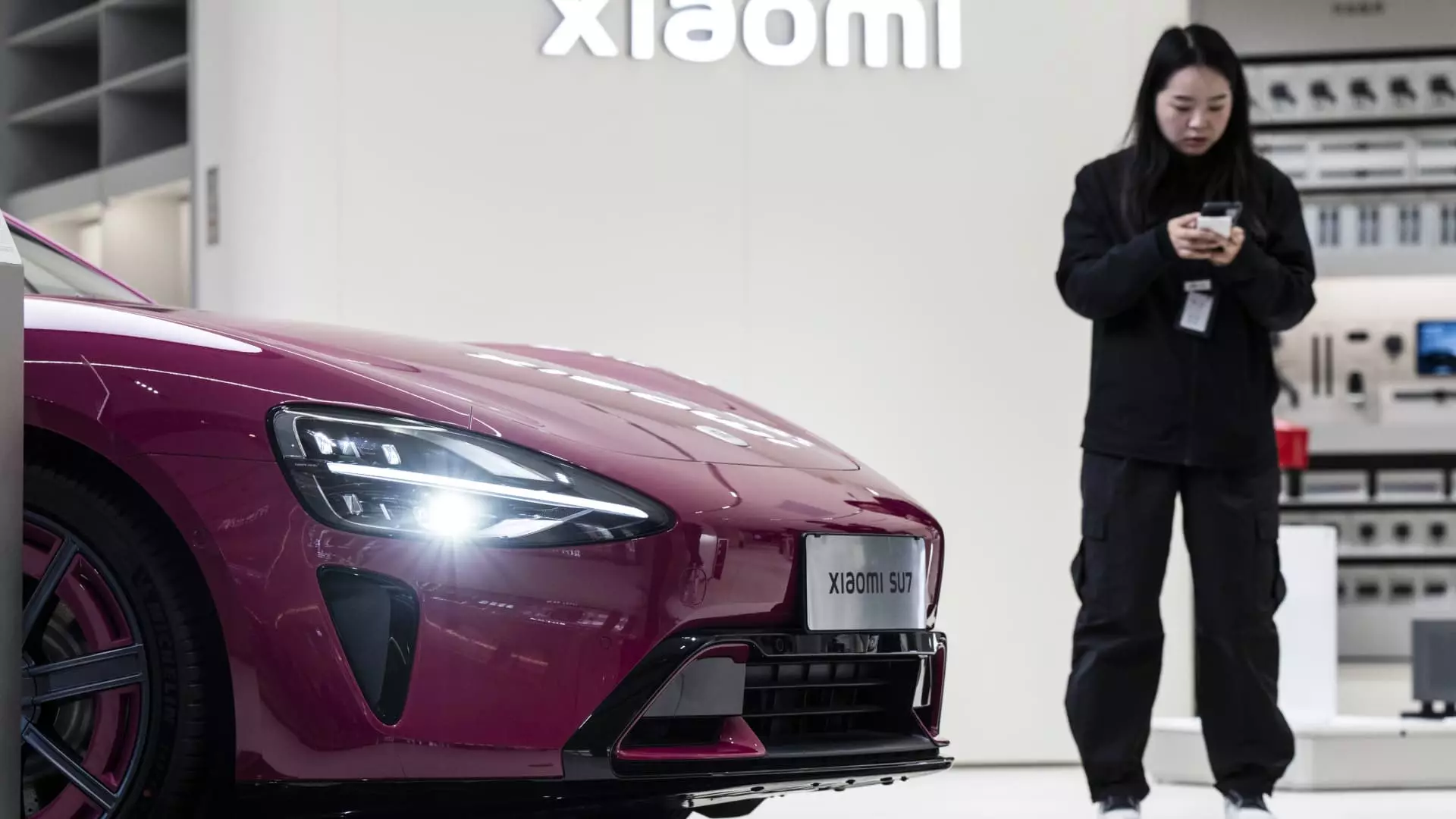The electric vehicle (EV) landscape in China is rapidly evolving, with several notable players emerging as significant contributors to the growth of the industry. In March alone, companies like Xiaomi, Xpeng, and Leapmotor collectively delivered more than 30,000 vehicles each, a feat that indicates a robust demand for EVs and a shift in consumer preferences. This contrasts sharply with the struggles of many of their startup competitors who continue to lag behind in terms of delivery numbers. The competitive dynamic between these automakers showcases the hustle and vibrancy of China’s EV market, where innovation often meets aggressive strategies.
Despite the commendable growth observed among these emerging contenders, it is important to contextualize their performance within the larger automotive ecosystem dominated by BYD, the reigning giant in China’s EV sector. BYD’s impressive delivery of over 371,000 vehicles in March illustrates its substantial market lead, which remains nearly insurmountable. Moreover, it underscores the challenge that newer brands face in establishing themselves against a well-entrenched competitor with a proven track record.
Xiaomi’s Ascendancy Marred by Tragedy
Xiaomi, a brand typically recognized for its high-tech gadgets, has recently pivoted successfully into automobile manufacturing. With a record delivery of nearly 30,000 electric vehicles in March, the launch of the SU7 model has been pivotal. However, it’s difficult to overlook the unfortunate incident involving the SU7, which led to a tragic loss of life. The accident—where the vehicle was reportedly in autopilot mode—has escalated discussions regarding the safety of autonomous driving technologies in a rapidly advancing sector.
This situation illustrates a critical concern in the burgeoning market: the balance between progressive innovation and consumer safety. Xiaomi’s ambitious goals for the year, targeting the delivery of 350,000 vehicles, might feel under threat from such events unless they adequately reassure the public regarding the safety measures surrounding their technology.
Growth Stories Behind Xpeng and Leapmotor
Xpeng and Leapmotor have demonstrated remarkable growth patterns, particularly in their consistent monthly performances. Xpeng’s delivery of over 33,000 vehicles and Leapmotor’s impressive tally of more than 37,000 units reflect not just volume but the companies’ abilities to capture the market’s attention through targeted marketing and consumer engagement strategies. Such numbers suggest that both automakers are effectively resonating with consumers who are increasingly searching for reliable and technologically advanced vehicles.
The year-over-year growth figures are particularly telling. A whopping 268% increase in Xpeng’s deliveries from the previous year indicates a significant ramp-up in consumer adoption, possibly fueled by improved designs and features. Leapmotor’s 154% growth alludes to a similar narrative: that consumers are willing to invest in innovative solutions in the automotive sphere that offer both practicality and accessibility.
BYD: The Unassailable Market Leader
While the excitement generated by new entrants captivates many, BYD’s dominating presence in the market cannot be ignored. The company’s innovative “Super e-Platform,” promising rapid charging and impressive mileage, positions it as a leader not just in volume but in advancing the technology that supports electric vehicles’ core mission. The emphasis on cutting-edge features, alongside the integration of AI for improved driving assistance, positions BYD favorably against competition.
Furthermore, BYD’s diversified offerings, coupled with its already established consumer base, fortify its competitive advantage against challengers like Tesla in a market that is increasingly becoming saturated. Despite Tesla’s prominent global status, the details surrounding its dwindling growth in China hint at a market that may soon prioritize local innovation over imported technologies.
The Trends Shaping the EV Market
The recent surge in delivery figures signals a renewed optimism in the market, contrasting with the traditionally softer first two months of the year. The transition to electric vehicles is no longer a distant ideal but a present-day reality, driven by consumer demand for sustainable practices alongside modern conveniences.
All players, including smaller brands like Nio and Zeekr, need to navigate this shifting landscape. Though many are reporting sales growth, the disparity between industry leaders and more recent entrants exemplifies the difficult path ahead. The operational velocity these companies can maintain directly impacts their long-term viability and ability to innovate.
Moreover, the market’s eagerness for electric vehicles reflects not just an economic shift but a cultural one. As consumer preferences evolve towards environmentally friendly modes of transport, traditional automotive giants—along with emerging companies—must adapt swiftly or risk obsolescence. The aggressive delivery targets set by multiple companies indicate that a significant portion of the industry is prepared to pivot, innovate, and foster a new era of electric transportation. In China, the future of mobility is electrifying, but it remains a race that demands both speed and responsibility.


Leave a Reply